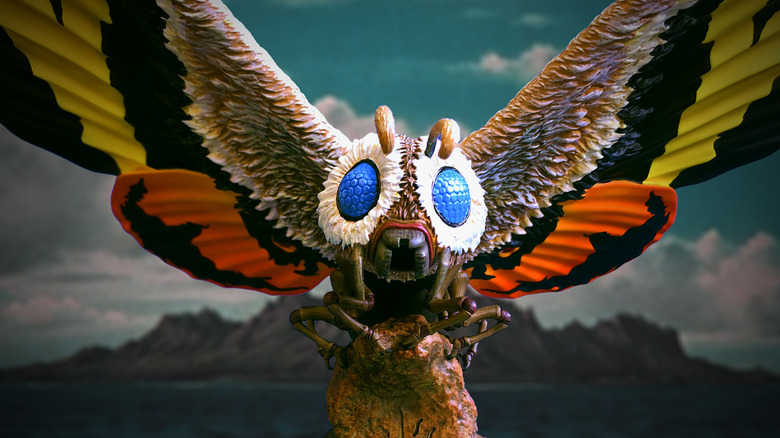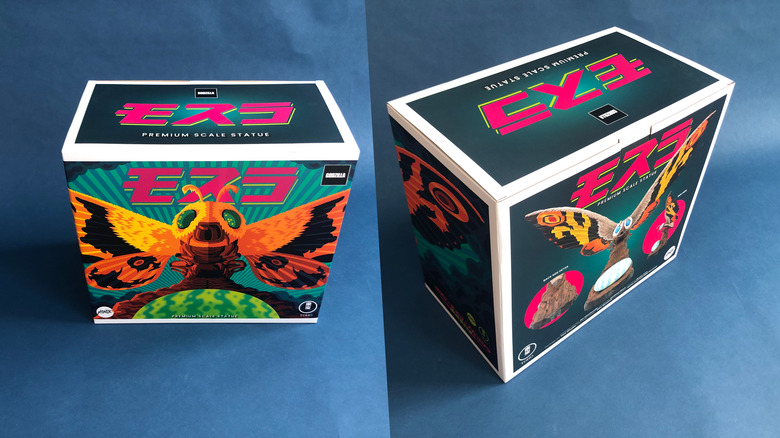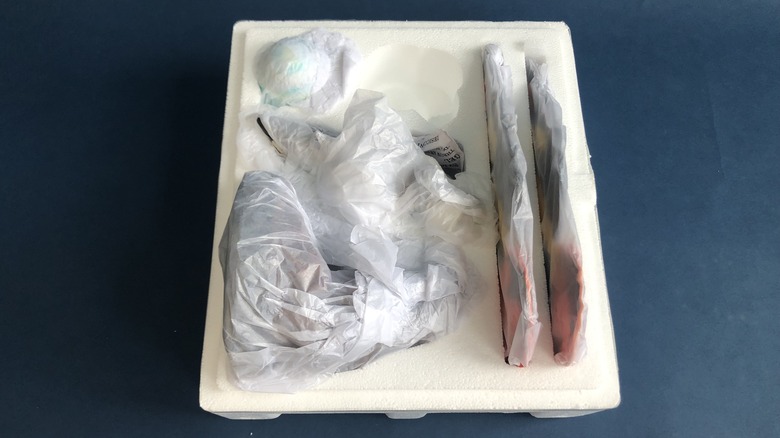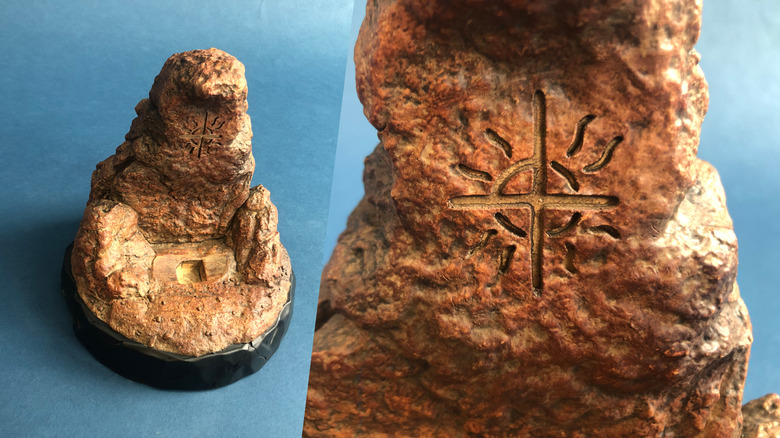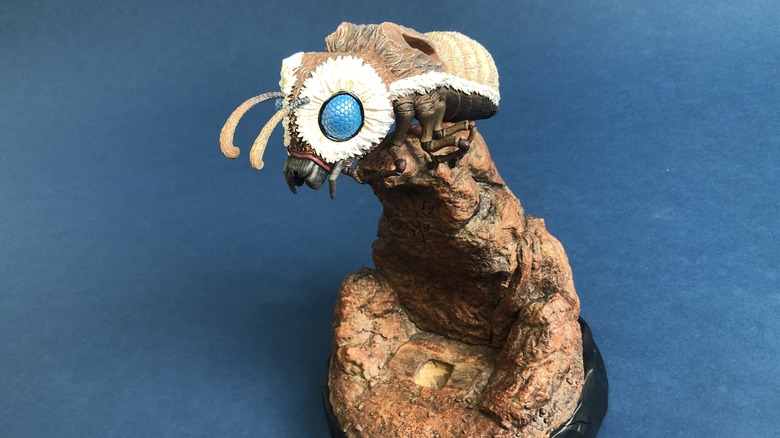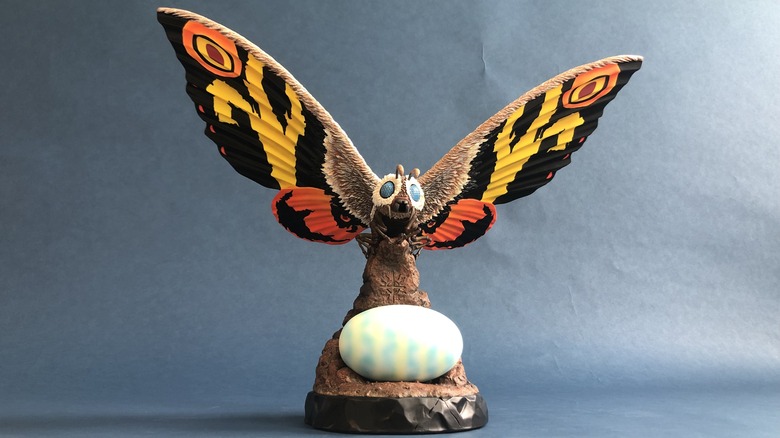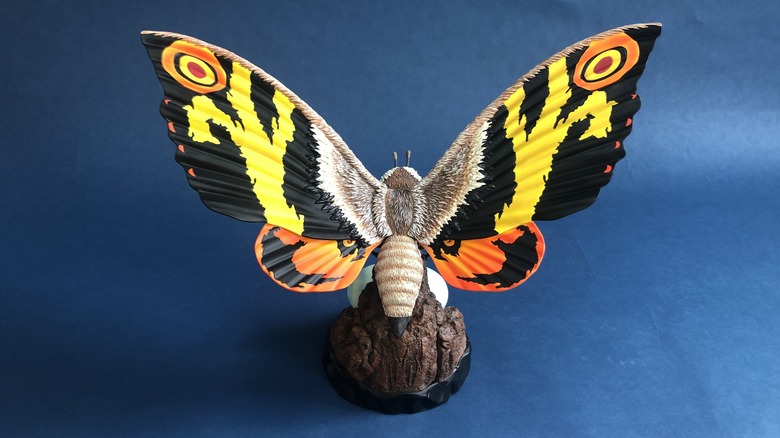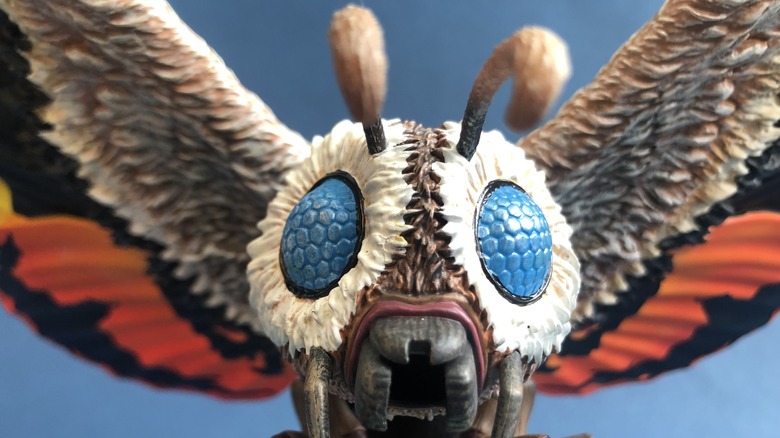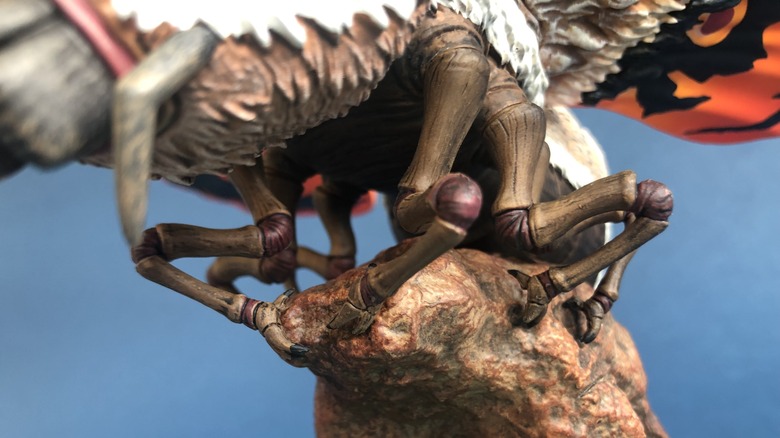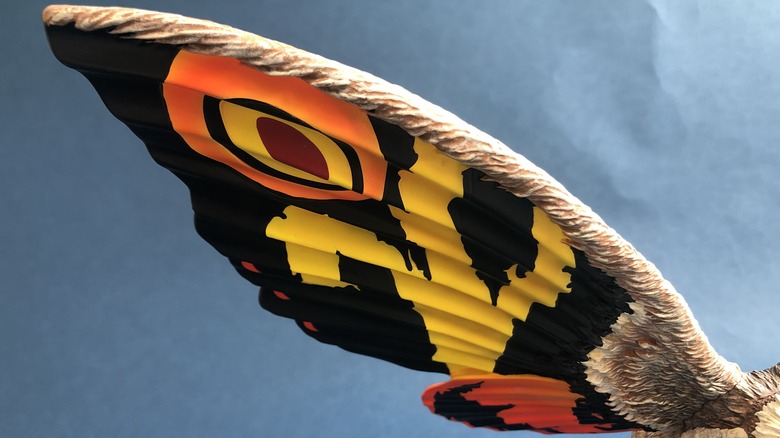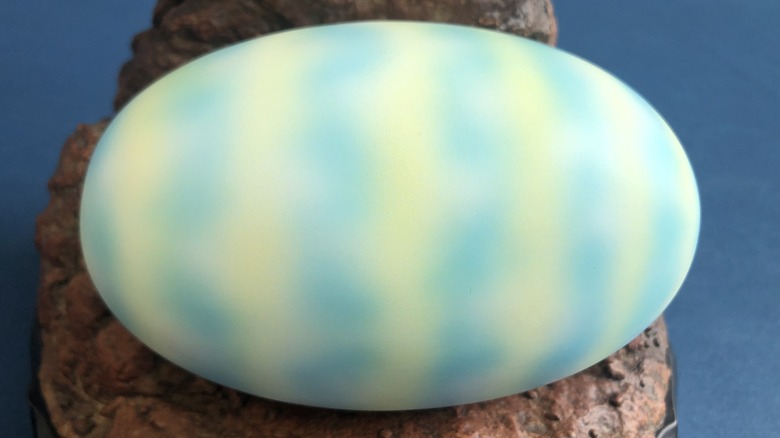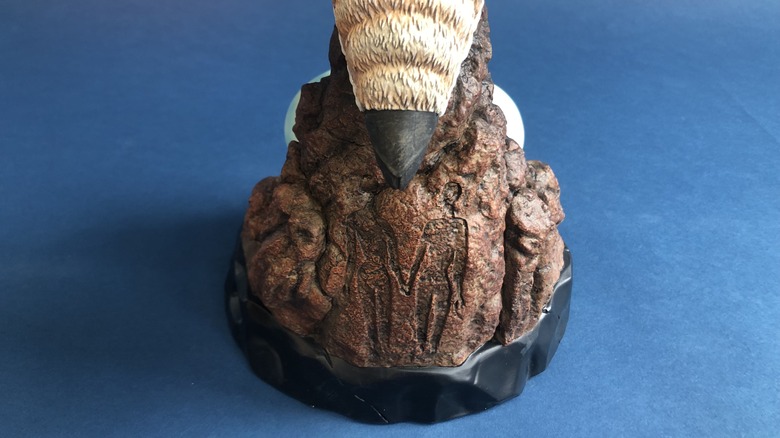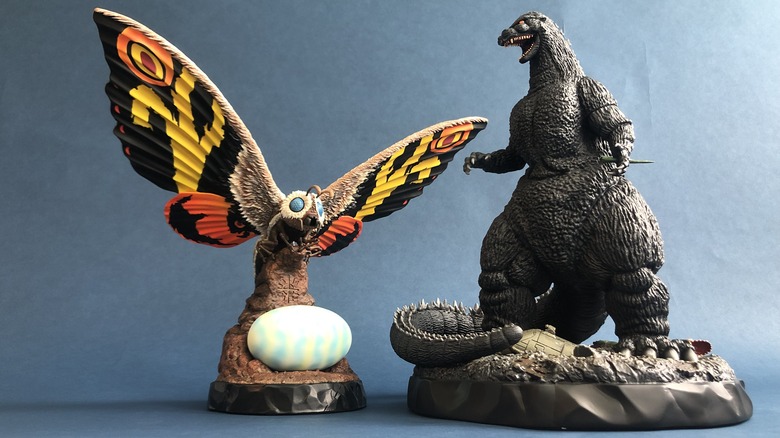Mondo's Mothra: Tokyo SOS Statue Takes Flight [Exclusive]
Last year we reviewed Mondo's super cool Godzilla 89 statue, based on the big guy's appearance from the 1989 Heisei era film "Godzilla vs. Biollante." Now we've gotten our hands on the next big item in Mondo's Kaiju line: the Mothra: Tokyo SOS premium scale statue, based on the winged one's appearance in the 2003 film "Godzilla: Tokyo S.O.S.," the fifth in the Millennium series.
The third and final G-film from director Masaaki Tezuka saw an angry Godzilla going up against not only Mothra but also two of her larva as well as Mechagodzilla, still battle damaged from 2002's "Godzilla Against Mechagodzilla." It also saw the return of series vet Hiroshi Koizumi as Dr. Shin'ichi Chûjô, the character he played in the original 1961 "Mothra" film and also his final feature film role.
Retailing for $375 (with payment plan available) from both Mondo and Sideshow, the Mothra: Tokyo SOS premium scale statue stands at 16-inches tall and with a wingspan of 19-inches wide, and also includes a special base that holds Mothra's egg from the film. There are many other cool aspects to this statue, so let's dive into the unboxing below!
Art box
Featuring some beautiful pop art illustrations from artist Tom Whalen, the art box proudly displays the Mothra logo in Japanese, a tradition Mondo carried over from their Godzilla statue. The reverse side gives collector's a first-hand look at the fully-assembled statue inside, and the box itself could easily make a perfect display base.
Packaging
The packaging on this one is simple for easy assembly, with only five parts: the base, the body, two wings, and Mothra's egg. Each piece is covered in wrapping paper to keep it from getting scuffed in the styrofoam. As you can see, there is an extra space used for the now sold out Limited Edition version which had an egg with the two larvae emerging.
Base
The base utilizes the same black rock bottom that Godzilla '89 had, giving both statues a continuity. The paint job on the rocky texture is exquisite, and it features the Mothra symbol that our human heroes in the movie (including Dr. Shin'ichi Chûjô) use to summon Mothra in order to stop Godzilla's rampage through Tokyo.
Mothra body
Attaching the body should definitely be your first move in assembling, and the PVC legs are easily maneuvered over the rock for proper placement. While some fans don't like the plastic material mixed in with the polystone, PVC is often the only way to make something work structurally. If you don't believe that is true, just check out our recent unboxing of Sideshow's The Mandalorian and Grogu premium format statue to see a balancing act that could only be pulled off with plastic.
Full reveal
Here is the whole enchilada with the wings attached and the egg placed in its rocky cradle. The visual impression this piece makes is so striking when you see it in person, with the colors popping and the scale of the creature really coming through big time. That iconic silhouette means this could only be one creature: Mothra.
Reverse view
The reverse view is almost cooler than the front, with the wings beautifully displayed along with all the fine detail of the fur. This would be the ideal display option if you have room to place the previously released Godzilla '89 statue behind Mothra so it looks like they're facing each other down.
Facial detail
The paint job on this piece is perfect, and not because it looks hyper-real. The main item on the agenda was clearly to make Mothra look like what she actually is, at least in the Toho movies: a miniature puppet. Mothra is different from many of the other Kaiju in the Godzilla movies in that she never needs to be played by a man in a suit. Her insect nature always demands that she be a puppet operated by strings and/or remote control.
Segmented legs
Here is a closer look at those aforementioned PVC legs. As you can see, they blend pretty seamlessly into the polystone body of the creature, and Mondo did not skimp on detail or paint job. Upon closer inspection, you can imagine how many collectors would be writing in about these legs arriving broken in the box if they were also made of polystone.
Wings
In this detail of the wing you can see the one place where the construction of the piece is a bit of a letdown, and that is the very visible seam where the wings meet the body. The artists at Mondo have covered this up somewhat in the sense that if you look at the piece directly from the front (as you can see in previous slides) you cannot see these seams, but if one wanted to showcase the piece at more of an angle they would be more prominent and somewhat spoil the illusion of verisimilitude.
Egg
Not only is this a perfect representation of the famous egg that has been featured in countless Mothra movie appearances, it also provides the perfect contrast, with the blue/yellow patterns painted on the egg distinguishing itself from the reddish rock formations of the base.
Shobijin silhouettes
Known colloquially by fans as "The Mothra Twins" or "The Fairies," the Shobijin ("little beauties") are the two tiny ladies who serve as Mothra's heralds or spokespeople. They essentially function as mystical caretakers of Mothra and all her descendants on Infant Island, where the Shobijin act as guardians. They are represented in silhouette on the back of the base, which is a great detail even though it is not featured in the actual film of "Godzilla: Tokyo S.O.S." that we can remember.
Pairing with Godzilla '89 statue
Overall, Mondo's Mothra: Tokyo SOS statue is a wonderful followup to last year's Godzilla '89, but unlike that statue, Mothra has yet to sell out, so now would be the perfect time to grab one. If you were lucky enough to get the Godzilla piece last year, see how perfect these two beasts who alternate as friend and foe look when placed side-by-side. As for what the next statue should be in this line let's just say we have our fingers crossed for King Ghidorah, but anything is possible!
